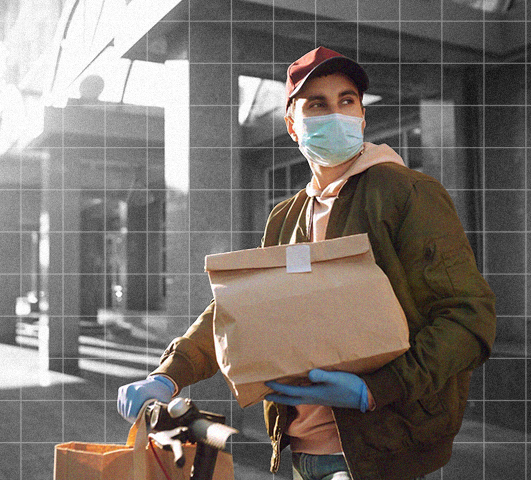
In today's fast-paced world, food delivery has become a vital part of our daily lives. Whether you're launching a new food delivery service or enhancing an existing one, having a well-designed website is crucial for success. A professional website design for food delivery not only attracts customers but also ensures smooth online ordering experiences.
This blog will explore key aspects of designing a food delivery website, incorporating essential features and best practices for user satisfaction.
Why Website Design Matters for Food Delivery Services
A food delivery website acts as the digital storefront for your business. It's the first interaction many customers will have with your brand. A poorly designed website can lead to lost sales, frustrated customers, and a damaged reputation. In contrast, a well-thought-out design:
- Encourages seamless navigation.
- Builds trust with secure and transparent ordering systems.
- Optimizes customer experience for mobile users.
- Enhances visibility through SEO for local food delivery.
Also Read: Website Design for Therapists
Key Features of a Great Food Delivery Website
1. User-Friendly Design
A simple and intuitive user-friendly design ensures customers can quickly find what they need. Key elements include:
- Clear navigation bars.
- Prominent call-to-action buttons like “Order Now” or “View Menu.”
- Easy access to customer reviews for building trust.
2. Online Ordering Features
Online ordering is the backbone of any food delivery business. Ensure your website supports:
- A seamless online ordering system.
- Customizable options for menu items (e.g., toppings or dietary preferences).
- Integration of discount codes or promotional offers.
3. Mobile-Optimized Site
With most orders placed via smartphones, a mobile-optimized site is a necessity. Responsive design ensures your website looks and functions perfectly on any device, providing a smooth experience for mobile users.
4. Interactive Menu Design
An appealing and functional menu design is vital. Features to include:
- High-quality images of food items.
- Detailed descriptions of ingredients and dietary information.
- Easy navigation through categories like “Appetizers,” “Main Courses,” and “Desserts.”
5. Secure Payment Gateway
Trust is crucial in online transactions. Integrate a secure payment gateway to protect customer data and enable various payment options, including credit/debit cards, digital wallets, and cash on delivery.
Also Read: Practical Guide to Dental Clinic Website
Advanced Features for Food Delivery Websites
1. Order Tracking System
A real-time order tracking system allows customers to follow their order status, increasing transparency and reducing inquiries.
2. Delivery Area Mapping
Incorporate delivery area mapping to show customers the regions you service. This can help manage expectations and reduce confusion during checkout.
3. Fast Loading Speed
A slow website can lead to lost customers. Ensure your site is optimized for fast loading speed, especially on mobile devices, to minimize bounce rates.
4. SEO for Food Delivery Websites
Boost your visibility with SEO for local food delivery by:
- Using geo-targeted keywords.
- Creating content around popular local dishes or restaurant specialties.
- Optimizing meta tags and descriptions.
5. Customer Reviews and Feedback
Displaying customer reviews builds credibility and encourages new users to place orders. Include a review system for post-purchase feedback.
Also Read: Website Design for Clothing Brands
Steps to Design a Food Delivery Website

Step 1: Choose the Right Food Delivery Website Template
Start with a well-designed food delivery website template that aligns with your branding. Customize the layout to reflect your brand’s colors, fonts, and style.
Step 2: Design for Mobile Responsiveness
Ensure your site is responsive across all devices. This includes scaling images, text, and interactive elements for smaller screens.
Step 3: Integrate Essential Features
Incorporate features like secure payment systems, delivery tracking, and an interactive menu for a seamless user experience.
Step 4: Optimize UX for Food Delivery
Focus on enhancing UX for food delivery by conducting usability testing. Gather feedback from real users to identify and fix any pain points.
Step 5: Incorporate SEO Best Practices
Implement local SEO strategies, such as optimizing for “food delivery near me” searches, to attract local customers.
Also Read: Actionable Tips For Finance Website
Common Challenges and Solutions in Food Delivery Website Design
1. High Cart Abandonment Rates
Use clear call-to-action buttons, enable guest checkouts, and provide multiple payment options.
2. Navigation Overload
Keep the layout simple with intuitive navigation and categorized menus.
3. Poor Mobile Experience
Invest in mobile-responsive design and optimize for touch interactions.
Conclusion
A well-crafted website design for food delivery is more than just a digital storefront; it's an essential tool for customer acquisition and retention. By focusing on user-friendly design, mobile optimization, and essential features like secure payment gateways and order tracking systems, you can deliver a seamless online ordering experience. Don’t forget to leverage SEO strategies and encourage customer feedback to continuously improve your platform.
FAQs on Food Delivery Website Design
1. What are the key features of a food delivery website?
A great food delivery website includes an intuitive user interface, a seamless online ordering system, secure payment integration, delivery tracking, and responsive design.
2. Why is mobile optimization important for food delivery websites?
Most customers use smartphones to place orders. A mobile-optimized site ensures smooth navigation, faster loading times, and better user experiences on mobile devices.
3. How can SEO help my food delivery website?
SEO for food delivery improves your website's visibility in search engines, attracting more local customers. Focus on keywords like “food delivery near me” and optimize for geo-targeted searches.
4. What is the role of customer reviews on a food delivery website?
Customer reviews build trust and credibility. Positive feedback encourages potential customers to try your service.
5. How can I ensure secure payments on my food delivery site?
Use a secure payment gateway that complies with data protection standards and supports multiple payment methods. By implementing these strategies, you can create a food delivery website that not only meets user expectations but also drives growth and customer satisfaction.
Also Read: Website Design for Accountants








